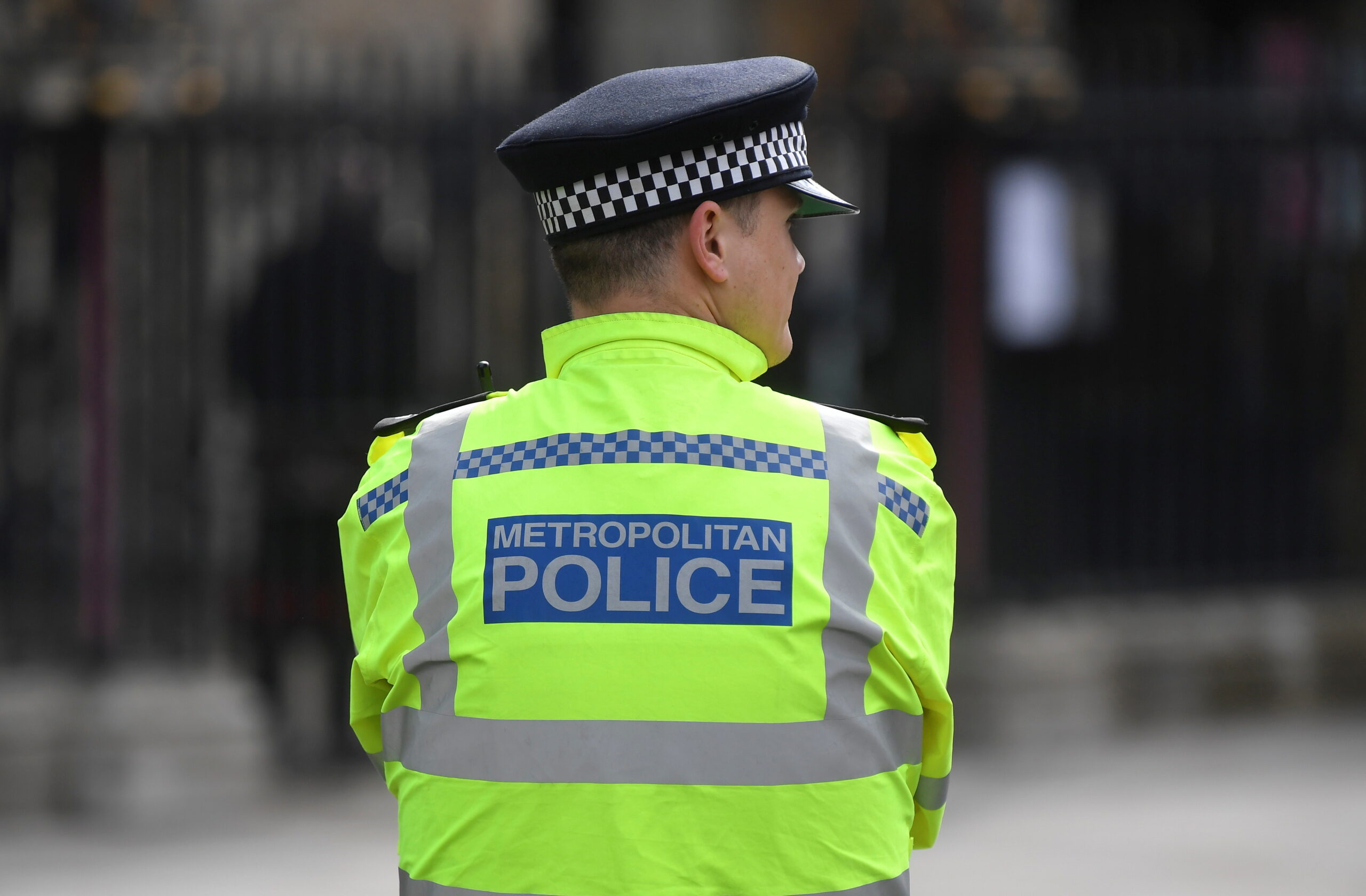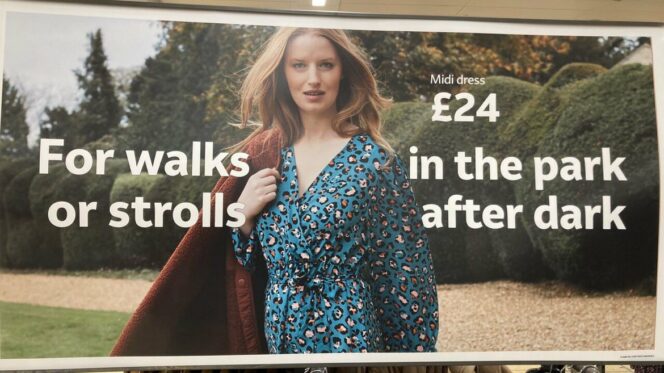The Panic Around ‘County Lines’ Is Legitimising Expanded Policing Powers
And minoritised people are in the crosshairs.
by Lauren E Wroe
9 February 2023

You’ve probably heard of ‘county lines’. The term itself is recent, a police description for a model of illegal drug distribution that sees urban gangs – pushed out of dense inner-city drug markets – traffic children and vulnerable people to rural and seaside towns to sell drugs. But the panic it refers to has historic roots, centred on the idea of shadowy criminal gangs that snatch young children off the street and embroil them in illegal enterprises.
These gangs are framed as parachuting in the Other. Urban gangs are seen to descend on (mostly white) rural and seaside towns, with armies of trafficked, young (disproportionately Black and minority ethnic) ‘runners’ selling class A drugs. No wonder the latest mention of county lines in the UK press has combined these gangs with another Othered panic: that of young refugees who have been smuggled across borders. Hundreds of missing asylum-seeking children in Brighton may have been swallowed up by county lines gangs, whistleblowers are warning. These young people urgently need to be kept safe. But increasingly, safeguarding of vulnerable young people against the likes of county lines gangs is being used as an argument for expanded policing and tighter borders.
It’s not that county lines drug dealing doesn’t exist. But the strategy the Tory government is pursuing to tackle it seems to be a reworking of the Home Office’s failed 2011 ‘anti-gang’ programme. This forms part of a wider policy shift, where concern for vulnerable children legitimises increasing police powers, such as those seen in the 2022 Police, Crime, Sentencing and Courts (PCSC) Act. It’s important that those of us organising against the legal expansion of police powers understand this change in approach and its implications.
Victims and perpetrators?
So, where did the panic around ‘county lines’ come from?
In 2011, Metropolitan police officers shot and killed Mark Duggan, a 29-year-old Black man under investigation by ‘Operation Trident’ (established to tackle gun and ‘gang’ crime). Following widespread unrest in the wake of Duggan’s death, the coalition government created its Ending Gang and Youth Violence (EGYV) programme. In the executive summary of the EGYV launch report, then home secretary Theresa May said that one in five people who “rioted” in the aftermath of Duggan’s death were “gang’ members […] bringing home” just how serious the problem of youth and gang violence was in England. Through a range of coordinated policing, social work and other multi-agency activity, the programme pledged to “target” young gang members for the “damage they do to themselves and their communities”.
Fast-forward a decade and the EGYV programme has pulled swathes of mostly Black and racially minoritised boys and young men into courtrooms and prisons. Thousands of these individuals – with no offending history – have been profiled on the likes of the Met’s rebuked ‘gangs matrix’ and have even had deportation cases built against them based on spurious allegations of gang involvement.
But now the government is subtly altering its messaging around young people and ‘gang’ violence: instead of the perpetrators, young people are portrayed as victims in need of protection. In 2015, the EGYV programme was re-branded ‘Ending Gang Violence and Exploitation’ (EGVE), with a nod to the emerging phenomenon of ‘county lines’. EGVE profiling work found young people were being criminally exploited into gangs against their will. Yet recommendations for safeguarding starkly resembled the approach that had come before, with heavy promotion of coordinated data-sharing between police and social services and the extensive use of surveillance databases.
Recourse to a raft of child protection practices and legal measures ensued. This has included the statutory defence (under 2015’s Modern Slavery Act) for individuals facing prosecution for offences carried out as a result of trafficking to ensure that young people are treated as victims. In 2019, the Home Office launched its County Lines Programme, which has received £145m in funding, ring-fenced for three years, on top of another £65m spent since 2019. Yet there is little evidence that the racial profiling and expansive surveillance that young ‘gang nominals’ experienced under the EGYV programme, and its accompanying policing and immigration strategies, has softened. This is particularly the case for racially minoritised young people, who are thought to be disproportionately impacted by county lines.
In 2020, just over 3,000 people in London alone were profiled by the police and other agencies as having links or suspected links to county lines gangs; only 17.4% were white. Researching modern slavery, anthropologist Professor Insa Koch sat in UK courtrooms and saw a stream of young Black men hauled in front of prosecutors, charged with trafficking younger ‘runners’ to sell drugs. In some cases, those in the dock were framed as both victims and perpetrators at the same time.
If a young person is suspected of being involved in county lines, information is usually shared between social services and the police – this can happen without their or their family’s knowledge or consent. Intelligence sharing was expanded under the PCSC Act, with provisions that compel local agencies – including the likes of councils and health authorities – to disclose information to police forces in order to tackle “serious violence”.
Other clauses see police re-granted suspicionless stop and search powers that even the Home Office concedes will disproportionately impact Black men. At the same time, critical social infrastructure that would keep children genuinely safe – including education, healthcare and the welfare state – is being neglected in favour of spending time and money on ever more intrusive policing strategies. Rather than keeping vulnerable young people safe, the current strategy seems to further place minoritised people under a spotlight of suspicion. But where previously gang strategies have found themselves critiqued and scrutinised, now a liberal discourse of child safeguarding broadens the appeal of expanding police powers.
Policing as ‘protection’.
This dynamic is at play in the cases of the hundreds of young people who have gone missing from Brighton. The threat of people-smuggling across our borders or county lines trafficking between our cities doesn’t incite from this government the need for safe passage, or caring (and regulated) children’s homes, or more money for schools, or the youth sector. It lays the way for tougher border controls and unprecedented police powers. Even suspected teenage trafficking victims quickly ‘age out’ of the limited safety nets that are supposed to be there for them, and then find themselves subjected to the full force of the hostile environment.
If we want to avoid feeding into a broader agenda of expanding police powers, we need to reflect on our strategies for supporting young people. When we join the cacophony of voices demanding the Home Office do more to safeguard young people from county lines gangs and traffickers, we risk legitimising an expanding web of moral-legal powers that can harm the people they’re meant to protect. Instead, we must treat this government’s rhetoric of ‘safety’ – and who it chooses to blame – with the suspicion and interrogation it warrants.
Dr Lauren E. Wroe is an assistant professor in Sociology at Durham University.


